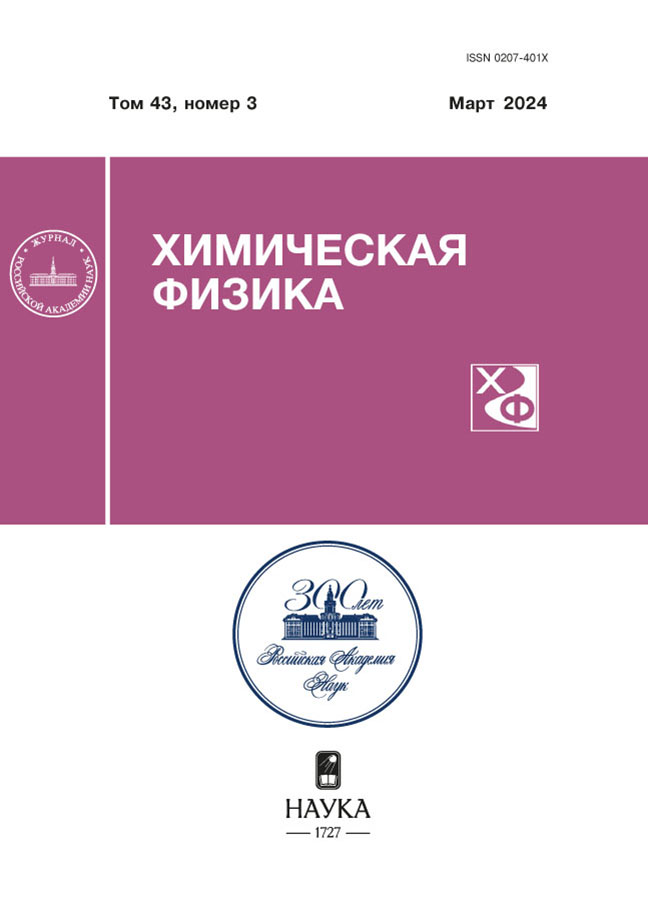Influence of Conditions for Obtaining Polylactide-Based Materials on Their Physico-Mechanical and Rheological Characteristics
- Autores: Bakirova E.R.1, Lazdin R.Y.1, Shurshina A.S.1, Chernova V.V.1, Zakharova E.M.1, Kulish E.I.1
-
Afiliações:
- Ufa University of Science and Technology
- Edição: Volume 43, Nº 3 (2024)
- Páginas: 95-102
- Seção: Chemical physics of polymeric materials
- URL: https://cardiosomatics.ru/0207-401X/article/view/674977
- DOI: https://doi.org/10.31857/S0207401X24030103
- EDN: https://elibrary.ru/VFRSXD
- ID: 674977
Citar
Texto integral
Resumo
The work is devoted to the study of the influence of the conditions for obtaining materials based on the synthetic polymer polylactide on their physico-mechanical and rheological characteristics. These materials are promising for the creation of biodegradable polymer implants of temporary action to maintain the mechanical properties of broken bones during the healing period. They are designed to replace the titanium fixators currently used for these purposes, which is due not only to the need for repeated surgery to extract them, but also to the fact that the strength and modulus of elasticity of titanium fixators exceed the values of bone strength indicators by an order of magnitude, which can cause the phenomenon of bone resorption and a decrease in its strength. It has been established that with an increase in temperature in the plasticization and pressing zone, as well as with an increase in pressure in the press, there is a natural decrease in the viscosity of the polylactide melt, as well as the values of the elastic modulus and breaking stress of solid samples. Varying the cooling rate of the material during the pressing process affects the degree of its crystallinity. At the same time, the lower the cooling rate, the greater the degree of crystallinity of the polylactide and the greater the values of the elastic modulus and breaking stress.
Palavras-chave
Texto integral
Sobre autores
E. Bakirova
Ufa University of Science and Technology
Autor responsável pela correspondência
Email: elina_bakirova@mail.ru
Rússia, Ufa
R. Lazdin
Ufa University of Science and Technology
Email: elina_bakirova@mail.ru
Rússia, Ufa
A. Shurshina
Ufa University of Science and Technology
Email: elina_bakirova@mail.ru
Rússia, Ufa
V. Chernova
Ufa University of Science and Technology
Email: elina_bakirova@mail.ru
Rússia, Ufa
E. Zakharova
Ufa University of Science and Technology
Email: elina_bakirova@mail.ru
Rússia, Ufa
E. Kulish
Ufa University of Science and Technology
Email: elina_bakirova@mail.ru
Rússia, Ufa
Bibliografia
- Wang Q., Zhou P., Liu S. et al. // Nanomaterials. 2020. V. 10. P. 1244.
- Nicholson W. J. // Prosthesis. 2020. V. 2. P. 100.
- Black J. Biological Performance of Materials: Fundamentals of Biocompatibility. N.W.: CSC Press, 1992.
- Hench L.L., Jones J.R. Biomaterials, artificial organs and tissue engineering. Boca Raton: CRC Press, 2005.
- Wong J.Y., Bronzino J.D. Biomaterials. Boca Raton: CRC Press, 2007.
- Shtilman M.I. Polymers for medical and biological purposes. M.: ICC “Academic book”, 2006.
- Kirilova I.A., Podorozhnaya V.T., Legostaeva E.V. et al. // Spinal surgery. 2010. No. 1. P. 81.
- Volova T.G. // Journal Siberian Federal University. Biology series. 2014. V. 7. No. 2. P. 103.
- Boyandin A.N., Nikolaeva E.D., Shabanov A.V. et al. // Journal Siberian Federal University. Biology series. 2014. V. 7. No. 2. P. 174.
- Misra S., Ansari T., Valappil S. // Biomaterials. 2010. № 31. C. 2806.
- Park H., Temenoff J.S., Mikos A.G. // Engineering of Functional Skeletal Tissues. 2007. V. 3. Р. 55.
- Shibryaeva L.S., Krasheninnikov V.G., Gorsheneva V.N. // High-molecular compounds. A. 2019. V. 61. No. 2. P. 139.
- Rogovina S.Z. // High-molecular compounds. C. 2016. V. 58. No. 1. P. 68.
- Averyanov I.V., Korzhikov V.A., Tennikova T.B. // High-molecular compounds. B. 2015. V. 57. No. 4. P. 281.
- Korzhikov V.A., Vlakh E.G., Tennikova T.B. // High-molecular compounds. Series A. 2012. V. 54. No. 8. P. 1203.
- Rogovina S.Z., Aleksanyan K.V., Vladimirov L.V. et al. // Russ. J. Phys. Chem. B. 2019. V. 13. No. 5. P. 812.
- Fujihara Y., Hikita A., Takato T. et al. // Physiol. 2018. V. 233. P. 1490.
- MacDonald Rt., McCarthy S.P., Gross R.A. // Macromolecules. 1996. № 29. Р. 7356.
- Dhillon M., Lokesh A. // Indian J. Orthop. 2006. № 40 (4). Р. 205.
- Burkhart S.S. // Biomaterials. 2000. № 21(24). Р. 2631.
- Kristensen G., Lind T., Lavard P. et al. // Arthrosc. J. Arthrosc. Relat. Surg. 1990. № 6 (3). Р. 242.
- Macarini L., Murrone M., Marini S. et al. // Radiol. Med. 2004. № 107(1-2). Р. 47.
- McFarland E.G., Park H.B., Keyurapan E. et al. // Am. J. Sports Med. 2005. № 33 (12). Р. 1918.
- Krul L.P., Belov D.A., Butovskaya G.V. // Bulletin of the Belarusian State University. Chemistry. 2011. No. 3. P. 5.
- Zhang J., Duan Y., Sato H. // Macromolecules. 2005. V. 38. № 19. P. 8012.
- Nakayama N., Hayashi T. // Polym. Degrad. Stab. 2007. V. 92. P. 1255.
- Tertyshnaya Yu.V., Podzorova M.V. // Russ. J. Phys. Chem. B. 2020. V. 14. No. 1. P. 167.
- Zhang J., Tsuji H., Noda I. et al. // Macromolecules. 2004. V. 37. № 17. P. 6433.
- Lim L.-T., Auras R., Rubino M. // Prog. Polym. Sci. 2008. V. 33, № 8. P. 820.
- Fischer E.W., Sterzel H.J., Wegner G. // Colloid and Polymer Science. 1973. № 251. P. 980.
- Schramm G.A. Practical Approach to Rheology and Rheometry 2nd Edition. Karlsruhe: Thermo Electron GmbH, 2000.
- Bakirova E.R., Lazdin R.Yu., Chernova V.V. et al. // Butlerov messages. 2022. V. 70. No. 4. P. 59.
- Bakirova E.R., Lazdin R.Yu., Chernova V.V. et al. // Fundamental and applied problems of obtaining new materials: research, innovation and technology. Astrakhan: Federal State Budgetary Educational Institution of Higher Professional Education “AstSU”, 2022. P. 3.
Arquivos suplementares














